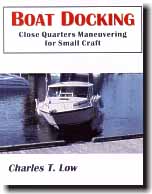 Nautical Sound Signals
Nautical Sound Signals
Recognition Aid
-on this page:
Disclaimer and Copyright
I provide all information on this page on a liability-free basis. Please use at your own risk, and verify anything critical to your boating safety with other authoritative sources. I have collated and condensed this information for my own personal use, from information in Chapman Piloting (59th ed.), the Canadian Collision Regulations 1983, and the U.S. Inland Rules 1999. I do not intend to imply any special knowledge beyond that. I find it useful in my boating, and I hope that you do to. You may wish to modify it for your particular needs. Suggestions always welcome.
This Nautical Sound Signals web page is Copyright © 2001-2014 ctLow. Please feel free to copy and distribute it, but only in its entirety and without modification (so including this notice), and please let me know. Thank you. ctLow
Maneuvering and Warning
| \\\\\\\\\\\\ | U.S. Inland/CDN | International |
| 1 short |
-meeting/crossing port to port (respond in kind) -overtaking to starboard (respond in kind) (i.e. in both cases, you alter course to starboard!) |
-altering course to starboard (i.e. meeting/crossing port to port -no response required) -not overtaking |
| 2 short |
-meeting/crossing starboard to starboard (respond in kind) -overtaking to port (respond in kind) (i.e. in both cases, you alter course to port!) |
-altering course to port (i.e. meeting/crossing starboard to starboard -no response required) -not overtaking |
| 3 short | operating reverse propulsion | operating astern propulsion |
| 5 short (or more) | danger | doubt |
| 1 long |
-rounding a bend or obstruction (respond in kind) -leaving berth | rounding a bend or obstruction (respond in kind) |
| 1 long, 1 short | drawbridge (USCG standard) | \\\\\\\\\\\\ |
| 2 long, 1 short | \\\\\\\\\\\\ |
overtaking to starboard (respond with long/short/long/short) |
| 2 long, 2 short | \\\\\\\\\\\\ |
overtaking to port (respond with long/short/long/short) |
| continuous foghorn | distress | \\\\\\\\\\\\ |
Restricted Visibility and Other
| 1 long <= 2 min | under power, under way and making way |
| 2 long <= 2 min | under power, under way and not making way |
| 1 long, 2 short <= 2 min |
not under command, constrained by draft, restricted maneuverability, sailing, fishing (sometimes, e.g. trawling), towing or pushing, at anchor fishing, at anchor in restricted visibility -also, Captain's Salute (not in ColRegs, may be documented elsewhere, or informal, but often heard ... at least in the Great Lakes Basin) |
| 1 long, 3 short | manned towed vessel (sounded after towing vessel's signal) |
| bell x 5 sec <=1 min |
at anchor or aground (>= 12m) (smaller vessels make "some other efficient sound signal" <= 2 min) |
| bell + gong x 5 sec <=1 min | at anchor or aground (>= 100m) |
| short/long/short/long | at anchor (optionally additional, to warn approaching vessels) |
| 1 short, 1 long, 1 short | anchored (optionally additional to bell/gong signals) |
| 3 dings, bell x 5 sec, 3 dings | aground (+ gong if required, + optional whistle signals) |
| 4 short | pilot vessel (optionally additional) |
| continuous | distress |
| any other unmistakably distinct sound signal | to attract attention |
| 3 long, 2 short | Master Salute (not in ColRegs, may be documented elsewhere, or informal) |
A few small final points:
A short "blast" means a duration of about one second, and a long (or "prolonged") blast lasts four to six seconds.
The Collision Regulations make barely any reference to the term "right of way"; see my article called Privilege and Burden.
All respectfully submitted,
ctLow
Nautical Sound Signals is Copyright © 2001-2021 ctLow
-first posted: 2001-08-29
-this page updated 2014-01-05